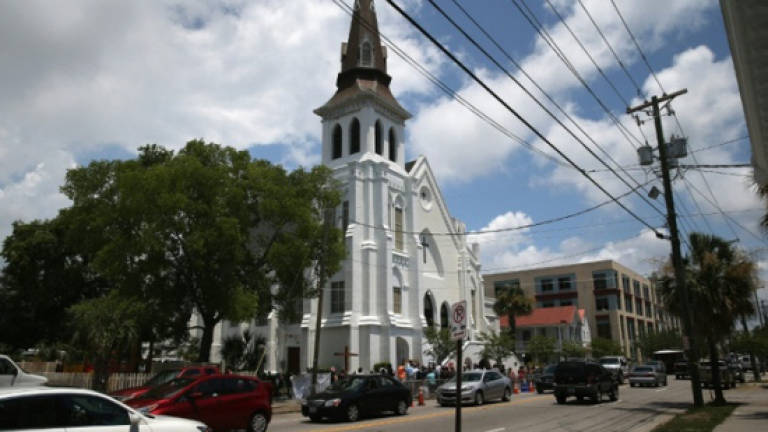Blood and bodies: Charleston jurors see church carnage

WASHINGTON: Jurors in the federal hate crimes trial of the white man accused of killing nine black parishioners in a Charleston church got a glimpse Thursday of the blood-soaked crime scene – carnage one former agent called "overwhelming".
Dylann Roof, the self-described white supremacist who prosecutors say carried out the attack in cold blood in June last year during Bible study at the "Mother Emanuel" church, could face the death penalty if convicted.
Bodies everywhere, the walls spattered with blood, shell casings and bullet fragments strewn around a room in the church basement – that was the scene described and shown to jurors on day two of Roof's trial in South Carolina.
The packed courtroom remained mostly silent as 3D images of the scene were displayed, ABC television affiliate WCIV reported. During the testimony, Roof did not look up, keeping his gaze on the table in front of him.
"It was very overwhelming," said Brittany Burke, who was a crime scene special agent for the South Carolina Law Enforcement Division at the time, describing what she found upon entering the church.
"My initial impression was it was very hectic. There were multiple victims, multiple items of evidence," she said, according to WCIV.
She described a scene "so chaotic" that it was hard to tell whether emergency first responders, police and firefighters had stepped in the blood that had pooled on the ground.
Many relatives of the victims and survivors chose to stay to see the harrowing images, despite an earlier warning from US District Court Judge Richard Gergel that they would see a "very graphic" scene.
In one angle of the scan, the body of Tywanza Sanders can be seen, covered in blood and his shirt ripped open after first responders tried unsuccessfully to revive him.
There were bullet holes in the walls, on the floor and through tables.
Over the next eight or nine hours, investigators worked through the night collecting about 117 pieces of evidence – including cartridge cases, bullets and bullet fragments, magazines, a black messenger bag and a belt, Burke said.
Dots showing where evidence was found filled a diagram of the room.
In all, the team recovered 74 casings and four live rounds at the church, the oldest African Methodist Episcopal place of worship in the US South.
The live rounds were found in a magazine that was left on a table. All other magazines were emptied.
Burke said 54 bullets were removed from the bodies during autopsies. The body with the most bullets was that of 87-year-old Susie Jackson, who had 11 of them lodged in her.
Jurors were also shown surveillance footage of Roof as he left the church holding a .45 Glock semi-automatic handgun.
Mistrial motion denied
At the start of the day, Roof's defence team filed a motion for mistrial – quickly denied by Gergel – after emotional testimony from a survivor, Felicia Sanders, who called the shooter "evil" and said he belonged in "the pit of hell".
"The witness was crying so hard that the government was compelled to request a recess at that moment," read the filing, referring to Sanders's tearful testimony on the trial's opening day Wednesday.
Sanders told the court that she lay in a pool of her son and her aunt's blood while cradling her granddaughter as the massacre unfolded.
"Many spectators and even court personnel – including members of the prosecution and defence – were crying with her," the defense motion read.
Roof's own mother experienced a heart attack during the testimony and had to be hospitalised, it added.
Federal prosecutors are seeking to put Roof to death, and have rejected his offer to plead guilty to the 33 federal charges against him – including hate crime violations that could carry the death penalty – in exchange for a life sentence.
The accused gunman is also facing state murder charges in South Carolina, though that trial is not due to begin until Jan 17. State prosecutors also are seeking the death penalty.
Roof's trial is taking place with the city on edge after a mistrial was declared in the case of a former South Carolina cop who shot dead an unarmed black suspect in neighboring North Charleston.
Both trials come during a year riddled with high-profile police shootings of African Americans that have inflamed racial tensions across the country. — AFP